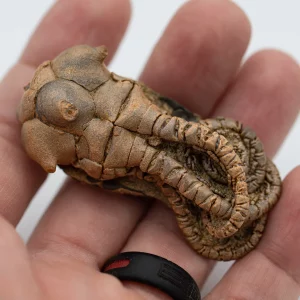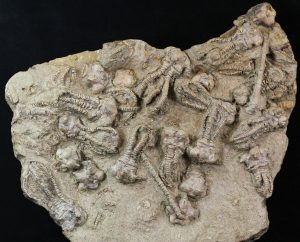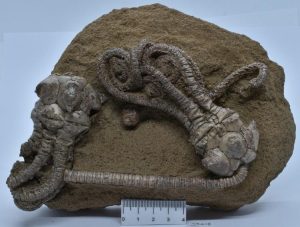An image that has recently gone viral on social media depicts a well-preserved set of fossils from a marine creature that lived 280 million years ago. But what was this animal exactly?

The fossils in question are those of Jimbacrinus crinoids, or sea lilies, and were found in Western Australia. These marine creatures lived approximately 280 million years ago, during the Permian period, and their fossils provide valuable insights into the evolution and diversity of life on Earth.

The fossils were first brought to the attention of the wider public through an image that circulated widely on social media. The image shows them arranged in a pattern that suggests they had been buried in sedimentary rock in their natural habitat. The fossils were reportedly found near Gascoyne Junction, a remote area in Western Australia that is known for its geological diversity.

When the Midwest Times investigated the origins of the image, they found that it had been posted on the website of a US-based fossil dealer. The dealer claimed that the fossils were legally obtained and could be sold to interested buyers. This raised some questions about the legal status of fossil collection and trade in Australia, where laws regarding the collection and sale of fossils vary from state to state.

David Gear, a representative from the Western Australian Museum, clarified the legal status of fossil collection in Western Australia. According to Gear, it is legal to collect and export fossils under certain circumstances, but collectors must obtain the necessary permits and follow guidelines for responsible fossil collecting.

The alien-looking fossils of Jimbacrinus bostocki crinoids – which were once abundant in the shallow seas that covered much of Western Australia during the Permian period – were first discovered in 1949 by the manager of Jimba Jimba cattle station, for which the genus was named.

This deposit was found along a dry creek bed and contained the fossilized remains of numerous species that resided on the sea floor during that era. Interestingly, these fossils are usually found complete and have not been uncovered in any other location.

The fossil deposit near Gasocyne Junction provides a glimpse into the extinction events of the Permian Period, at the end of which the “Great Dying” occurred. This was the largest and most severe of the five known mass extinction events throughout recorded geological time, causing more than 90% of all marine species to vanish from the fossil record.

FUN FACT: Crinoid fossils were the inspiration for the Sentinels in the Matrix Movies. Although the Sentinels initially had several functions, they eventually evolved into robotic killing machines that scoured the underground metropolis in search of humans and Zion ships, serving the Matrix’s agenda.

The Jimbacrinus crinoids found near Gascoyne Junction are particularly noteworthy for their excellent preservation, which may enable scientists to study their soft tissues and internal structures in greater detail.